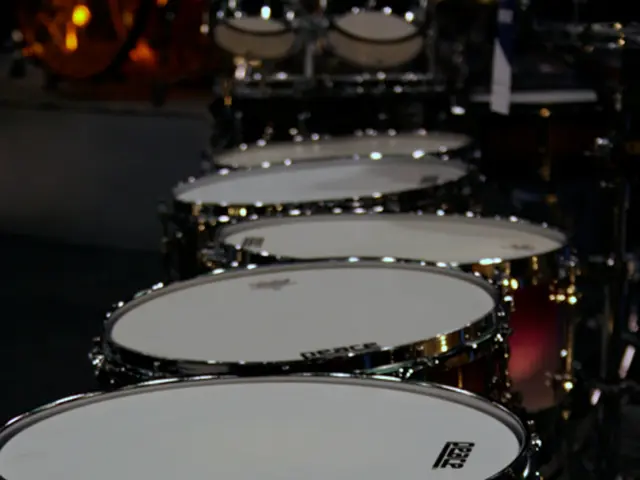Are surgical robots the key to future medical advancements, or an expensive marketing strategy?
Robotic surgeons have been around for a while, not just in the realm of science fiction. The first documented robot-assisted surgery took place in 1985, marking a new era for minimally invasive surgeries. In 2000, the da Vinci Surgery System revolutionized robot-assisted surgery, offering a more precise, miniaturized, and less invasive approach.
The da Vinci, originally based on the PUMA 560 robotic arm, came armed with sleek, 1 cm thin surgical arms and a high-resolution 3D magnification screen, making surgical procedures more sophisticated. The Endo-wrist feature, designed to mirror a surgeon's movements, further enhanced the system's capabilities.
Since its FDA approval in 2000, the da Vinci has undergone 10 updates, gaining widespread acceptance in the medical community. By 2013, robots were utilized in over 422,000 surgeries in the U.S., marking a 15% increase from the previous year.
However, some medical experts have raised concerns about the benefits of robot-assisted surgery. A high-profile study conducted by surgical oncologists at Memorial Sloan-Kettering Cancer Center found no difference in complications or hospital stays between traditional open surgery and robotic surgery for bladder cancer. Critics argued that Intuitive Surgical, the manufacturer of the da Vinci, objected to the study, labeling it as misleading.
Recent research suggests that robotic surgery may not offer substantial advantages over traditional methods in all cases. While older studies were more favorable towards robots, many recent studies, with the exception of a survey by Intuitive Surgical employees, find few advantages to the robotic system for certain procedures.

The cost of the da Vinci is a major concern, with the initial cost for hospitals reaching up to $2 million and each robotic arm needing replacement after 10 uses. With studies finding that robotic bladder removal procedures cost an average of $16,250 more than open surgery, the question remains: why is robotic surgery becoming more popular?
Some critics argue that hospitals are investing in robotics to attract patients due to aggressive advertising by Intuitive Surgical. However, Intuitive Surgical asserts that hospitals and surgeons make their decisions based on patient benefits and economic factors.
In response to the current cynicism towards robotics in healthcare, researchers are exploring new ways to improve robotic technologies, such as developing "squishy robots" that can change their hardness Levels, potentially enabling them to be more adaptable during surgeries.
It seems that the future of robot-assisted surgery is a controversial topic, with ongoing research providing a mix of benefits and limitations. Only time will tell how this technology will continue to evolve and impact healthcare.

- Despite its deprecated status in some circles, the da Vinci Surgery System, initially modeled on the PUMA 560 robotic arm, has revolutionized robot-assisted surgery with its innovative design and capabilities.
- In the medical community, the da Vinci, which underwent 10 updates since its FDA approval in 2000, has gained widespread acceptance, with over 422,000 surgeries using robots in the U.S. by 2013.
- Critics, however, argue that the benefits of robot-assisted surgeries, such as the da Vinci, may be overstated, with some medical experts finding no difference in complications or hospital stays between traditional open surgery and robotic surgery for certain medical-conditions.
- One major concern regarding the da Vinci system is its high cost; initial hospital costs can reach up to $2 million, and each robotic arm needs replacement after 10 uses.
- Studies suggest that robotic bladder removal procedures cost an average of $16,250 more than open surgery, leading to questions about the popularity of robotic surgery in the health-and-wellness industry.
- Some critics argue that hospitals invest in robotics to attract patients due to aggressive advertising by the da Vinci's manufacturer, Intuitive Surgical, but the company maintains that hospitals and surgeons make decisions based on patient benefits and economic factors.
- In response to the ongoing debate over the benefits and limitations of robotic surgery, researchers are exploring new innovations, such as developing "squishy robots" to make them more adaptable during surgical procedures.
- As research continues to uncover both benefits and limitations of robot-assisted surgery, the future of this technology remains a controversial topic in the fields of medicine, finance, technology, and medical-conditions, with only time telling how it will impact health-and-wellness.








